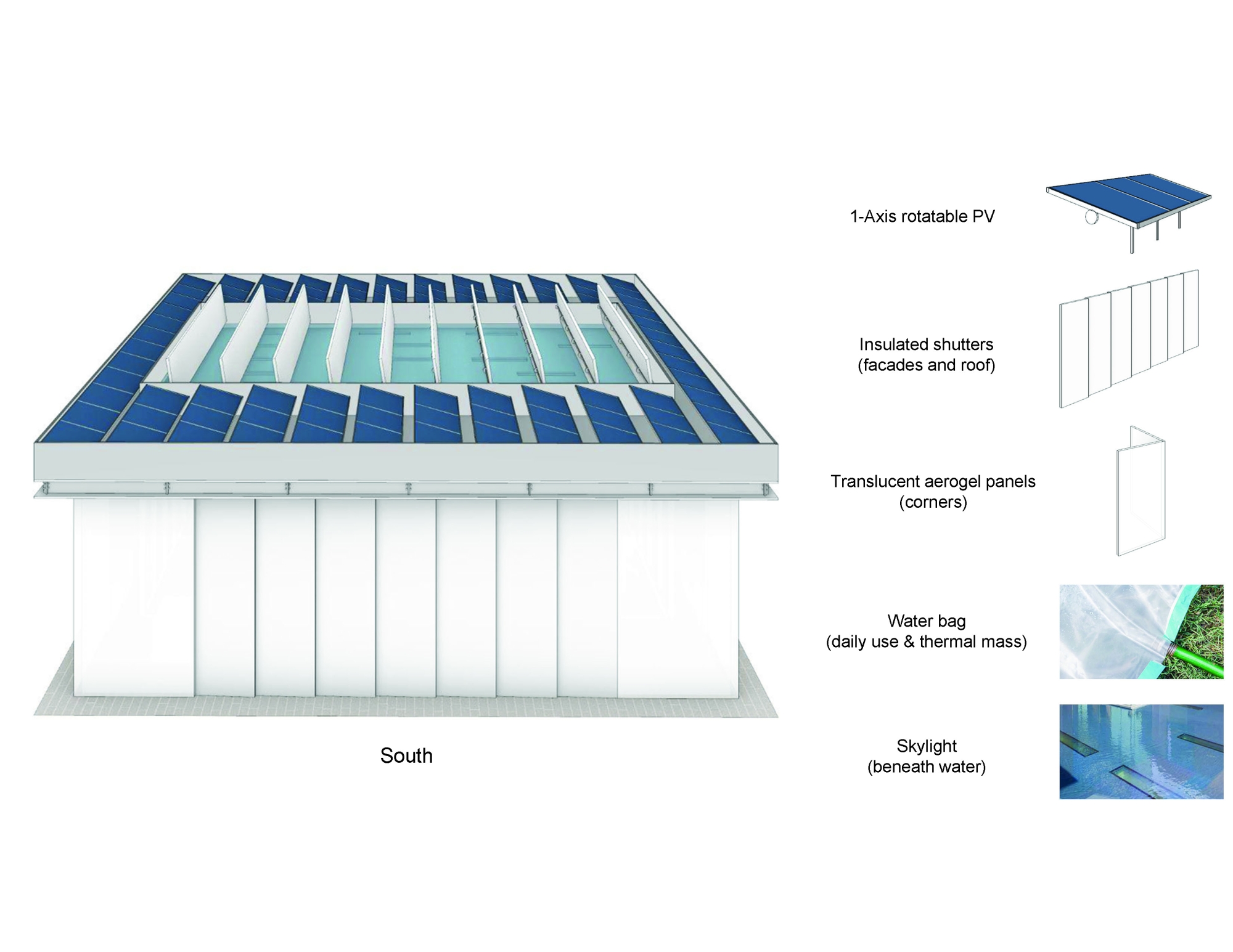ANNSIM’24 Conference Paper: Dynamic Insulated Shutter System for a Double-Layer Building Façade: A Case Study with Physical Prototype
- Zhirui Biana and Li Pan
Adaptive building envelopes (ABEs) enable the dynamic response of building enclosures to environmental conditions. Movable window insulation is a powerful adaptive technique, but the potential of movable window insulation has not been sufficiently investigated. Based on a case study, this paper aims to explore the performance of movable window insulation in moderating indoor temperatures in Phoenix. An insulated shutter system with a double-layer façade capable of adapting to varying environmental conditions, especially the hot days and cold nights of the desert, was investigated. Specifically, the control operation schedules of different facades and layers were based on temperature and solar position to maximize energy efficiency, daylighting, and thermal comfort. Dynamic shading simulations were used to optimize the façade performance. Subsequently, temperature thresholds are established based on the optimization of vital parameters like UDI (Useful daylight illuminance), EUI (Energy use intensity), and PMV (Predicted mean value).
Instructors
Dorit Aviv
William W. Braham
Teaching Assistants
Xiang Jiang
Max Hakkarainen


